Smolensk
Smolensk is a beautiful Russian city, reminiscent of Veliky Novgorod or Pskov: like them, there is something Lithuanian-Western Russian about Smolensk.
When you arrive in Smolensk, instead of finding an overgrown earthen rampart with remnants of brick, you discover a real Kremlin from the late 16th century.

Moreover, these Kremlin walls are not at all of a showcase appearance. They simply and unceremoniously stick out in the middle of the city.
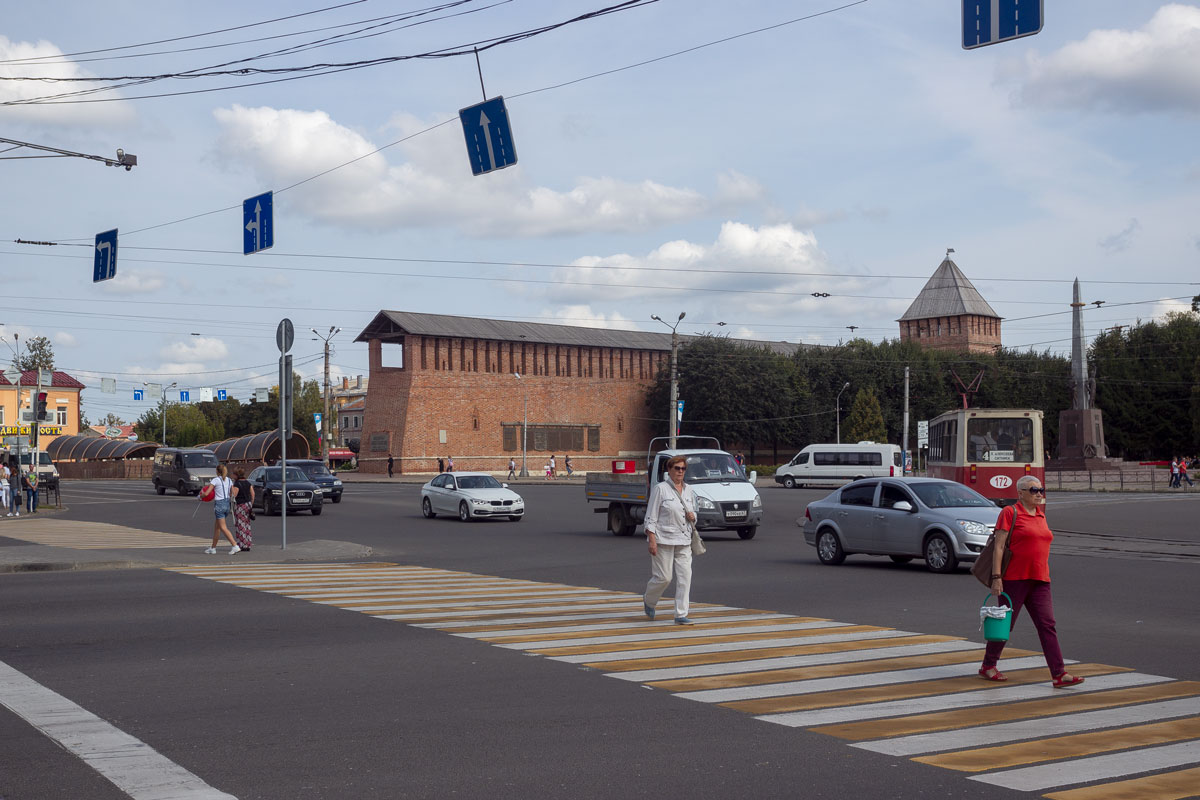
Roads pass under the walls, and panel Khrushchev-era apartment buildings stand a hundred meters away. There is a certain authenticity to this, if you will. You will encounter this extremely rarely in Russia, but easily in Europe or the Middle East.
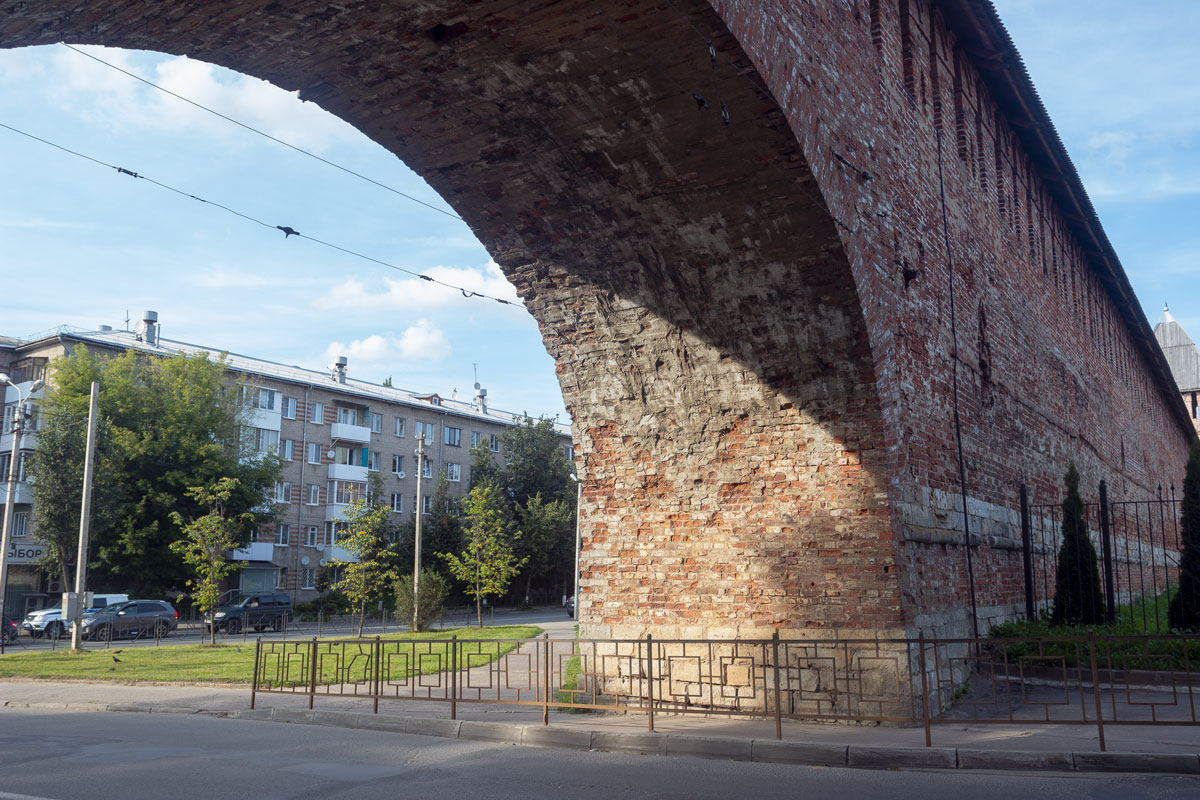
The Moscow Kremlin, compared to the Smolensk wall, is like a child’s building set. The Smolensk wall, which was 6.5 km long, included the entire Smolensk of that time, and now includes the entire historical center of the city.

If you forget for a moment that more than half of the wall was blown up during Napoleon’s retreat, it turns out that Smolensk still remains a medieval fortress.



The eastern part of the wall is in disrepair. I wouldn’t say it’s completely bad. If not for drug addicts and alcoholics, tours could be conducted in the towers. Inside, there are ceilings like this:

In the western part, which is closer to the center, museums and exhibitions are located.

It’s worth even going into the museum. Military artifacts from the time of the Russo-Polish War of 1609 are exhibited here. If I’m not mistaken, that’s the banner of the Polish-Lithuanian Commonwealth.

The Kuznetsk Banner of the same period: (Note: No text or image was provided by the user after this sentence.)

The center of Smolensk is diverse. In the city, you can find completely pre-revolutionary landscapes.
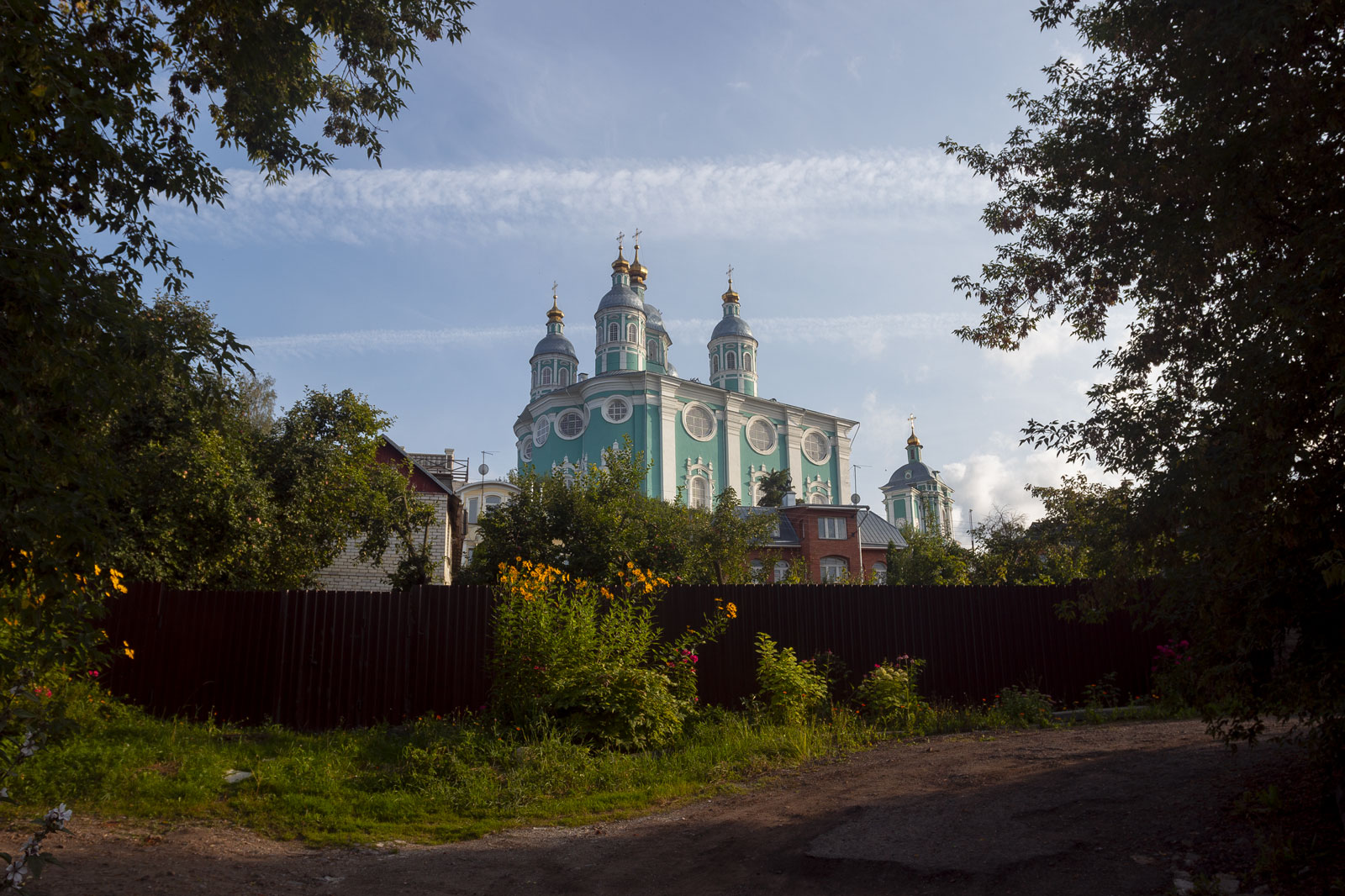
Let’s compare it with the photographs of 1912 by Prokudin-Gorsky:
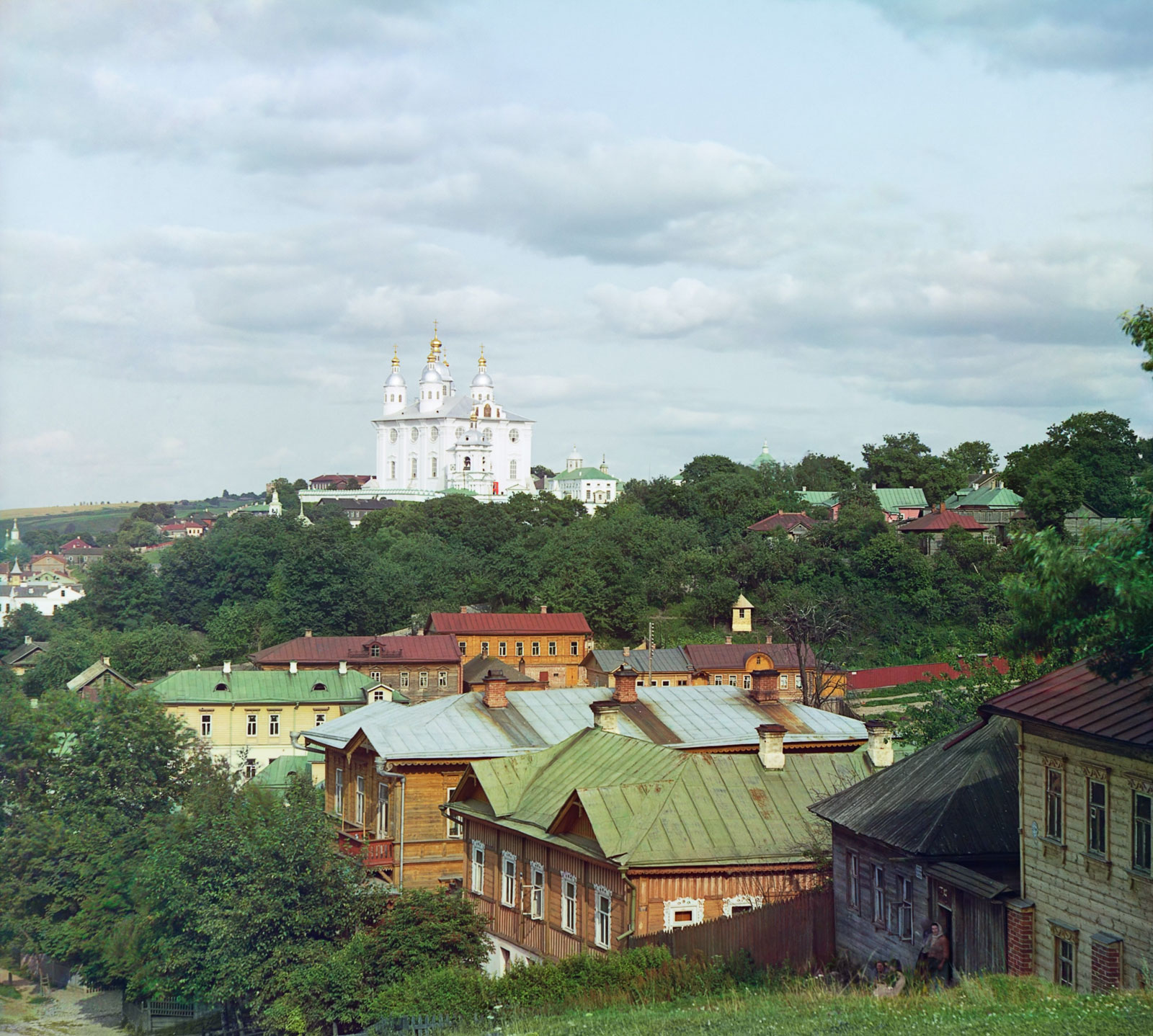
Well, it’s the same:

And these wooden houses are located in the very center of Smolensk. Of course, not all of Smolensk is wooden. The village mostly survived around the Assumption Cathedral. By the way, the cathedral was built in the same style as the Kiev-Pechersk Lavra.

So the city is diverse. Here’s a beautiful building, the Palace of Creativity for Children and Youth. Russian style, 1896.

The magnificent “October” cinema of the Stalin era.
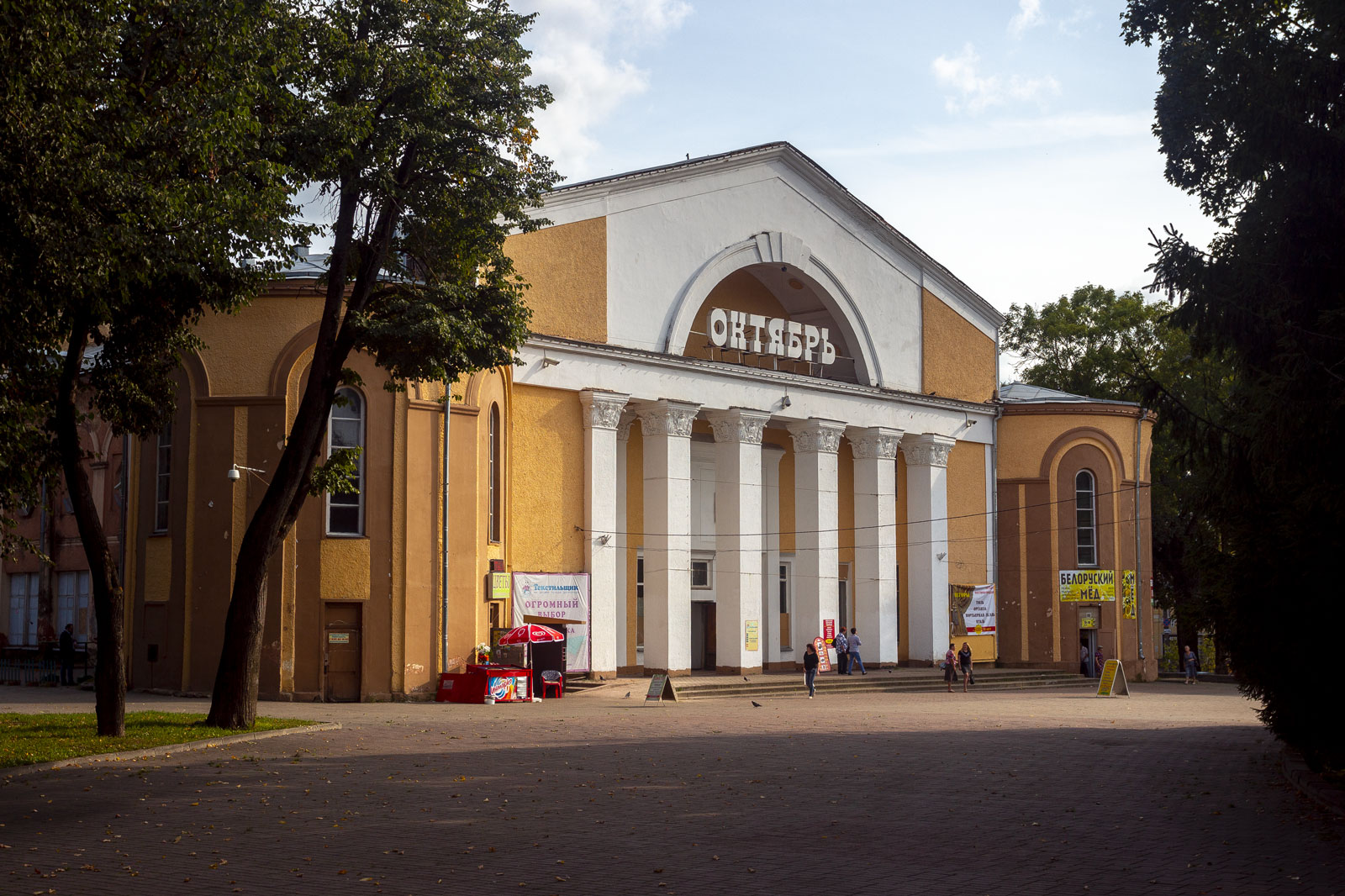
Now the cinema is half abandoned. Part of the building is just empty. The coolest columns and ceilings are combined with hideous green paint and the inscription “Cafe”, which was painted by an idiot.

In the other half of the cinema, they sell clothes.

Pure Russian surrealism. With the same success, one could sell sausages in the Sistine Chapel (no).

The central square of the city is another asphalt lake.

Lenin against the background of the Vlasov flag and the Imperial emblem. Oh my God.

Streets in the center near the square.

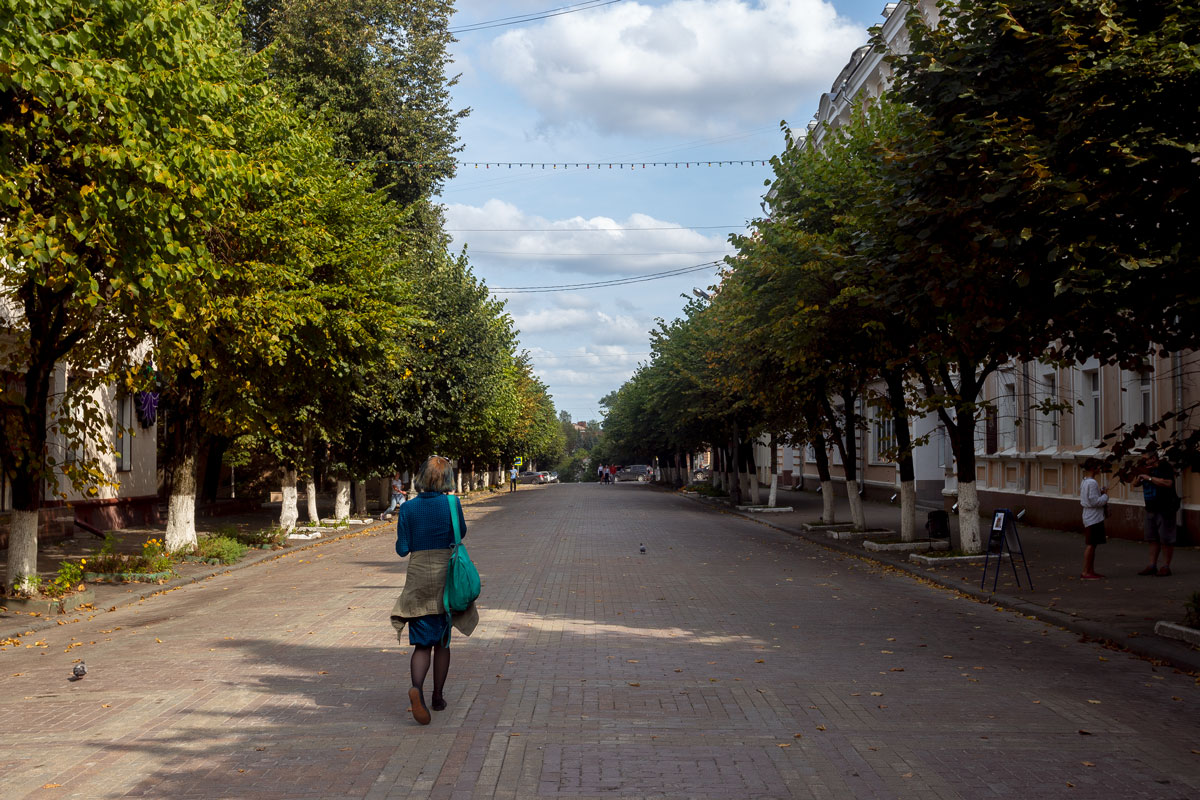
Landscape in one of the courtyards.

As in any Russian city, in Smolensk only the facades are beautiful. Any turn into a courtyard immediately reveals all the shabbiness.

Monstrous LDPD propaganda posters hang on the houses.

There are huts on chicken legs in the parks.

Through the overgrowth of grass, ancient Soviet paving stones are visible.

Suddenly, an unidentified constructivist-style building emerges and disappears from view.
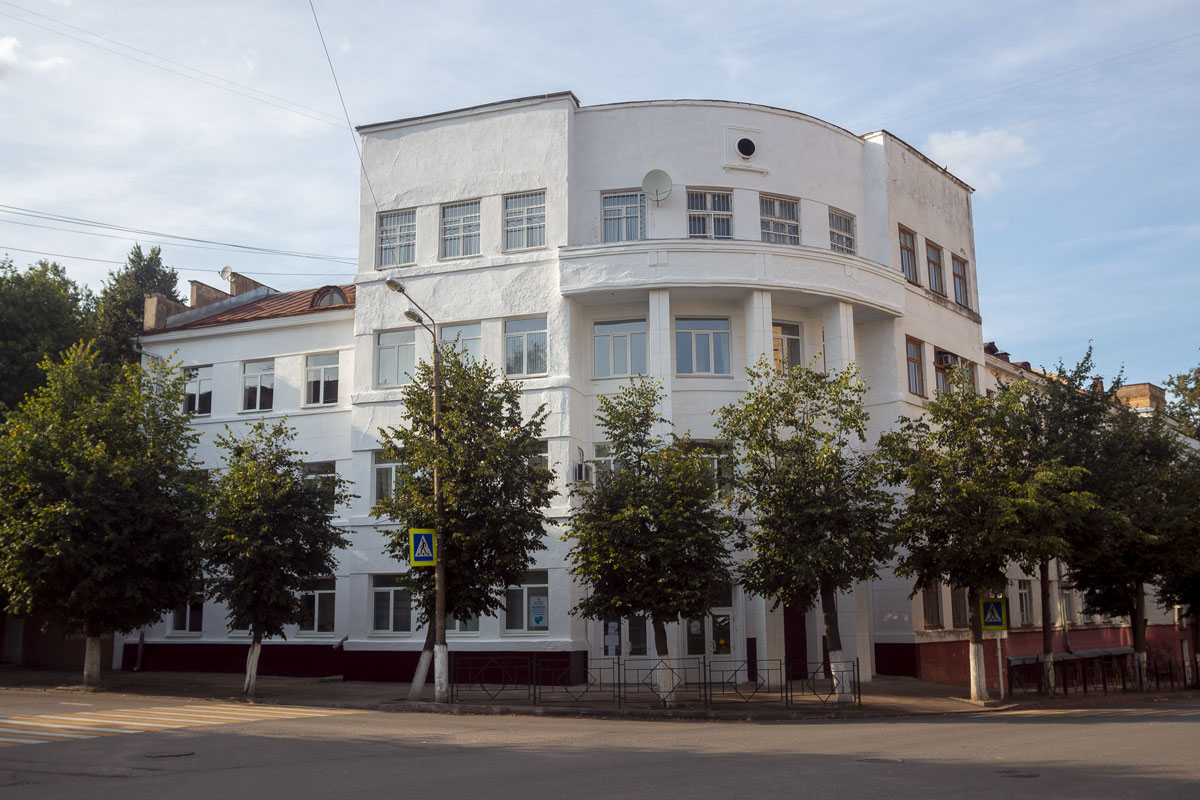
Another piece of the Smolensk wall is hidden in the bushes... oh, oops, those are some apartments.
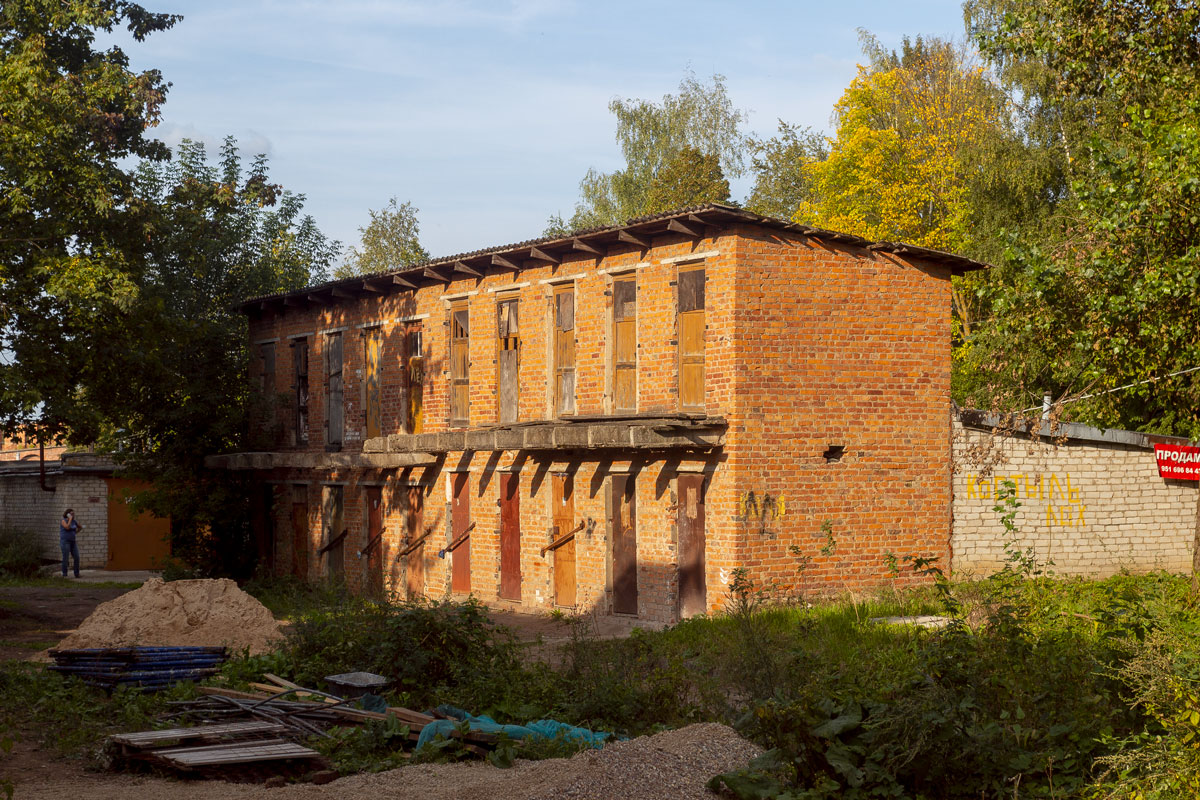
Only clotheslines remain from the children’s playgrounds.

They are building new ones, but it’s somehow crappy.

Sometimes Smolensk reminds me of Thailand.

Sometimes — an exhibition of folk calligraphy.

In general, this is how it is in your Smolensk.
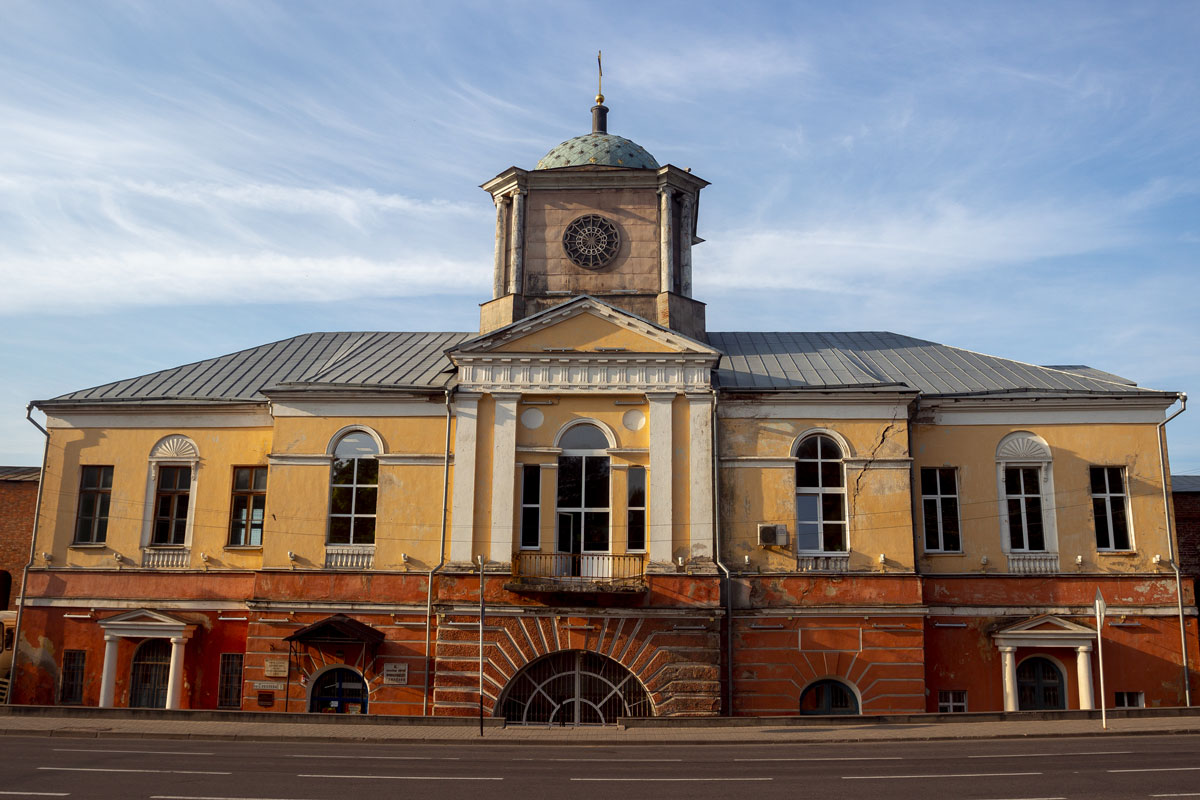
A beautiful city that is long overdue for a good renovation. Otherwise, it will die like Vologda.



